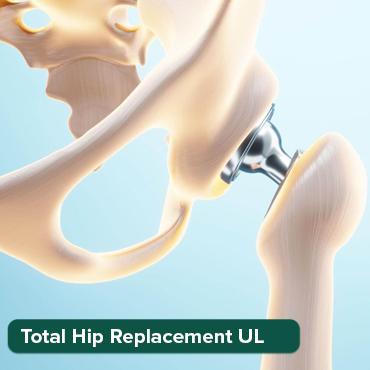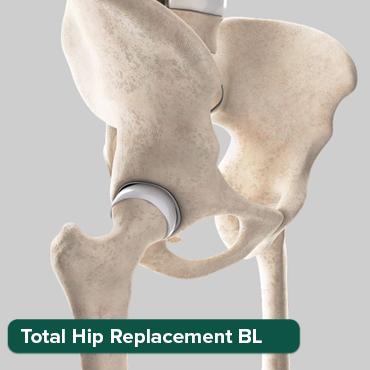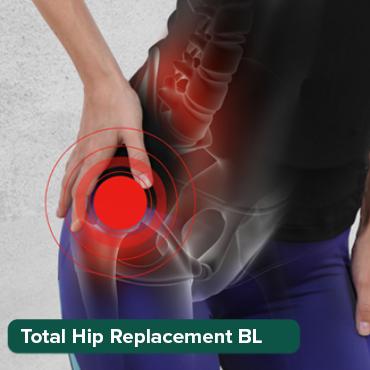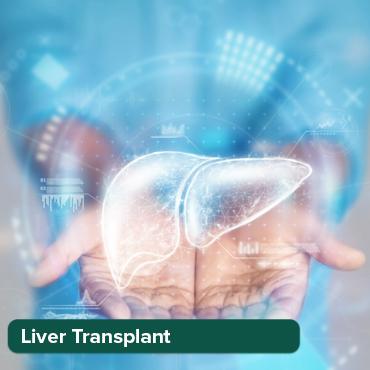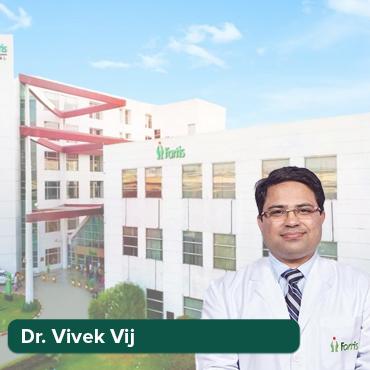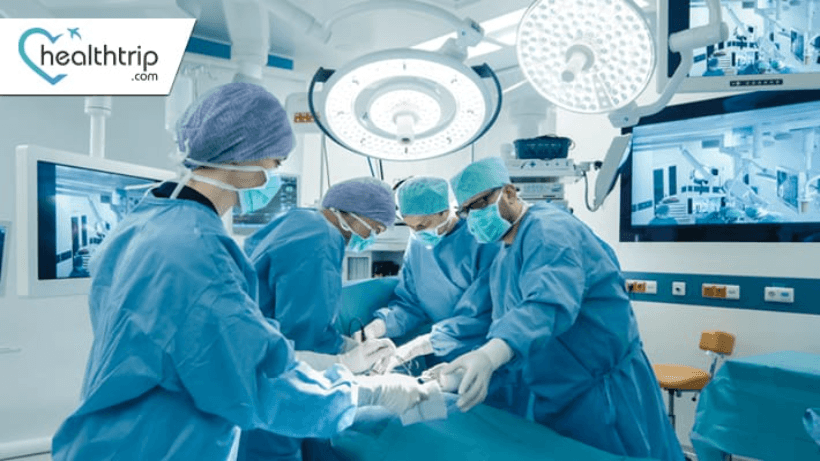
Open vs. Laparoscopic Surgery: Prostate Cancer in the UAE
16 Nov, 2023
 Healthtrip
HealthtripIntroduction:
Prostate cancer is a prevalent health concern globally, and the United Arab Emirates (UAE) is no exception. As medical technology continues to advance, the choice between open and laparoscopic surgery for treating prostate cancer has become a crucial decision. In this blog, we will delve into the intricacies of these two surgical approaches, exploring their advantages, drawbacks, and the evolving landscape of prostate cancer treatment in the UAE.
Understanding Prostate Cancer:
Before delving into the surgical techniques, it is essential to understand prostate cancer and the factors influencing treatment decisions. Prostate cancer occurs when abnormal cells in the prostate gland, a walnut-sized organ in men, start to grow uncontrollably. The prevalence of prostate cancer in the UAE has been rising, necessitating effective and technologically advanced treatment options.
Most popular procedures in India
Advantages of Open Surgery:
1. Tactile Sensation:
Open surgery provides surgeons with direct tactile feedback, allowing for a heightened sense of touch during the procedure. This hands-on experience enables precise movements and enhanced control over delicate maneuvers.
2. Versatility:
The open surgical approach is known for its versatility. Surgeons can adapt to various anatomical complexities and address unexpected complications effectively. The direct visualization afforded by the open method contributes to adaptability in navigating diverse patient scenarios.
Wellness Treatments
Give yourself the time to relax
Lowest Prices Guaranteed!

Lowest Prices Guaranteed!
3. Robust Track Record:
Open surgery has a long-standing history of success in treating prostate cancer. The extensive experience accumulated over years of practice contributes to a robust track record, instilling confidence in both surgeons and patients regarding the procedure's efficacy.
4. Established Procedural Norms:
Given its traditional nature, open surgery has well-established procedural norms. This standardized approach can be advantageous in situations where a more conventional method is preferred, providing a clear framework for surgical teams to follow.
5. Hands-On Control:
Surgeons performing open surgery have direct, hands-on control over the instruments throughout the procedure. This control can be particularly beneficial when addressing nuanced anatomical structures, ensuring precision in the removal of cancerous tissues.
6. Immediate Response to Complications:
In open surgery, any unexpected complications can be addressed promptly due to the surgeon's immediate proximity to the surgical site. This quick response capability contributes to minimizing the potential impact of unforeseen challenges.
7. Team Collaboration:
Open surgery often involves a collaborative effort among surgical teams. The direct communication and coordination among team members can be advantageous, especially in complex cases where multiple specialists may be involved in the procedure.
8. Potential for Manual Adjustments:
The open approach allows for manual adjustments based on real-time observations. Surgeons can adapt their techniques during the surgery, addressing variations in patient anatomy or unforeseen obstacles as they arise.
9. Skill Utilization:
Open surgery relies on the surgeon's skill and experience. This emphasis on the surgeon's expertise can be seen as an advantage in situations where the surgeon's familiarity with the traditional approach contributes to procedural success.
Drawbacks of Open Surgery:
1. Invasive Nature:
Open surgery is inherently invasive, involving a large incision in the lower abdomen. This increases the risk of complications such as infections, excessive bleeding, and a longer recovery period for patients.
2. Extended Hospital Stay:
Patients undergoing open surgery typically require a more prolonged hospital stay compared to minimally invasive alternatives. The extended recovery period can contribute to higher healthcare costs and may pose challenges for both patients and healthcare facilities.
3. Higher Risk of Blood Loss:
The larger incision in open surgery increases the potential for significant blood loss during the procedure. This elevated risk of bleeding can necessitate blood transfusions and may impact the overall recovery process.
4. Greater Pain and Discomfort:
The invasive nature of open surgery often leads to greater postoperative pain and discomfort for patients. This can result in an increased reliance on pain medications and a slower return to normal daily activities.
5. Visible Scarring:
The large incision in open surgery leaves a more noticeable scar on the patient's abdomen. This visible scarring can have cosmetic implications and may cause distress for some individuals, impacting their quality of life post-surgery.
6. Delayed Recovery:
Due to the trauma associated with the larger incision, the recovery period for patients undergoing open surgery is typically more extended. This delay in recovery can impact the patient's ability to resume regular activities promptly.
7. Higher Infection Risk:
The open nature of the surgical approach exposes the internal organs to a higher risk of infection. This risk is further exacerbated by the extended recovery time, as patients may be more susceptible to postoperative infections during their hospital stay.
8. Potential for Hernias:
The creation of a large incision in open surgery increases the likelihood of developing incisional hernias. These hernias can require additional surgical intervention, leading to further complications and healthcare expenses.
9. Impact on Immune Response:
The traumatic nature of open surgery may have a more pronounced impact on the patient's immune response. This can potentially prolong the recovery process and increase vulnerability to other health issues during the postoperative period.
10. Resource Intensive:
Open surgery often requires a larger medical team and more extensive resources compared to minimally invasive alternatives. This resource-intensive nature can pose logistical challenges for healthcare facilities, impacting overall efficiency.
Laparoscopic Surgery: A Minimally Invasive Alternative
Laparoscopic or robotic-assisted laparoscopic surgery has gained popularity as a minimally invasive alternative to open surgery. This technique involves several small incisions through which a laparoscope and robotic instruments are inserted. The surgeon controls the robotic system to perform the procedure with enhanced precision.
Advantages of Laparoscopic Surgery:
1. Minimally Invasive Nature:
Laparoscopic surgery is inherently minimally invasive, involving small incisions through which specialized instruments and a camera are inserted. This results in reduced trauma to surrounding tissues, leading to less postoperative pain and a quicker recovery.
2. Reduced Blood Loss:
The smaller incisions used in laparoscopic surgery contribute to significantly reduced blood loss during the procedure. This advantage minimizes the need for blood transfusions and promotes a safer surgical environment.
3. Shorter Hospital Stay:
Patients undergoing laparoscopic surgery typically experience a shorter hospital stay compared to open surgery. The quicker recovery allows for a faster return to daily activities and reduces the overall healthcare costs associated with prolonged hospitalization.
4. Faster Recovery Time:
The minimally invasive nature of laparoscopic surgery translates to a faster recovery time for patients. Reduced postoperative pain and discomfort enable individuals to resume their normal activities sooner, enhancing their overall quality of life.
5. Enhanced Vision:
Laparoscopic surgery provides surgeons with a high-definition, 3D view of the surgical site through the laparoscope. This enhanced vision allows for better visualization of anatomical structures, contributing to improved precision during the procedure.
6. Smaller Scarring:
The use of small incisions in laparoscopic surgery results in smaller, less noticeable scars. This aesthetic advantage is particularly significant for patients who prioritize the cosmetic outcome of the surgery and wish to minimize visible scarring.
7. Lower Infection Risk:
The reduced exposure of internal organs during laparoscopic surgery lowers the risk of postoperative infections. The smaller incisions and shorter hospital stays contribute to a decreased susceptibility to infections, enhancing overall patient safety.
8. Quicker Return to Normal Activities:
Patients undergoing laparoscopic surgery often experience a quicker return to their regular daily activities. This advantage is particularly valuable for individuals with busy lifestyles who aim to resume work and other commitments promptly.
9. Less Disruption to Surrounding Tissues:
The precision offered by laparoscopic instruments minimizes disruption to surrounding tissues. This advantage is crucial in preserving healthy structures and organs adjacent to the surgical site, promoting better overall postoperative health.
10. Adaptability to Robotic Assistance:
Laparoscopic surgery can be enhanced with robotic assistance, combining the benefits of both minimally invasive techniques and advanced robotic technology. This adaptability allows for even greater precision and dexterity in certain procedures.
Drawbacks of Laparoscopic Surgery:
1. Cost Implications:
The initial setup and investment costs for laparoscopic equipment, including specialized instruments and the need for a skilled surgical team, can be higher than traditional open surgery. This financial consideration may pose challenges for healthcare facilities and impact overall accessibility.
2. Learning Curve:
Laparoscopic surgery requires specialized training for surgeons to adapt to the use of smaller instruments and the hand-eye coordination needed for precise movements. The learning curve associated with this technique may result in a longer period before surgeons become proficient in laparoscopic procedures.
3. Limited Tactile Feedback:
The use of long, thin instruments in laparoscopic surgery limits the surgeon's tactile feedback compared to open surgery. The reduced tactile sensation can make it challenging to assess tissue consistency and may increase the risk of unintentional damage to surrounding structures.
4. Dependency on Technology:
Laparoscopic surgery heavily relies on technological equipment and instruments. Technical malfunctions or failures during a procedure can disrupt the surgical process and may require a swift transition to an alternative method, potentially affecting patient outcomes.
5. Potential for Longer Operating Times:
In certain cases, laparoscopic surgery may have longer operating times, particularly when surgeons are less experienced with the technique. Prolonged operating times can increase the risk of complications and may impact the overall efficiency of surgical procedures.
6. Limited Adaptability to Complex Cases:
While laparoscopic surgery is versatile, certain complex cases may be better suited for open surgery. The limited adaptability to intricate anatomical variations or challenging pathologies may necessitate a switch to open procedures in some instances.
7. Equipment Maintenance Costs:
The maintenance and upkeep of laparoscopic equipment can contribute to ongoing costs for healthcare facilities. Regular maintenance and the need for periodic upgrades to stay current with evolving technologies may strain financial resources.
8. Risk of Trocar Injuries:
Trocars, the instruments used to create access points for laparoscopic instruments, pose a risk of injury during insertion. Accidental damage to blood vessels or organs can occur, emphasizing the importance of precise placement by the surgical team.
9. Potential for Carbon Dioxide Complications:
Laparoscopic procedures involve insufflating the abdomen with carbon dioxide to create a working space. In some cases, this insufflation can lead to complications, such as respiratory issues or gas embolisms, requiring careful monitoring and management.
10. Technological Disparities:
The availability and accessibility of advanced laparoscopic technology may vary across healthcare facilities. Disparities in technology can impact the uniformity of patient care and limit the widespread adoption of laparoscopic surgery in certain regions or medical institutions.
Cost Analysis in the UAE:
1. Open Prostate Cancer Surgery:
1.1. Average Cost: AED 10,000 to AED 15,000
Open prostate cancer surgery, characterized by a large abdominal incision, remains a cost-effective option in the UAE. The absence of specialized equipment contributes to a more affordable surgical procedure compared to its laparoscopic counterpart.
2. Laparoscopic Prostate Cancer Surgery:
2.1. Average Cost: AED 15,000 to AED 20,000
Laparoscopic prostate cancer surgery, leveraging advanced technology and specialized instruments, incurs a higher cost ranging from AED 15,000 to AED 20,000. The use of a laparoscope for enhanced visualization and precision, coupled with the need for skilled surgeons, contributes to the increased expenses associated with this minimally invasive approach.
3. Factors Influencing Cost:
- Type of Surgery:
- Laparoscopic surgery tends to be more expensive due to the utilization of specialized equipment and technology.
- Hospital or Clinic:
- The choice between public and private healthcare facilities plays a significant role. Private hospitals and clinics typically charge higher fees than public institutions.
- Surgeon's Fees:
- The experience and reputation of the surgeon can impact the overall cost. Highly skilled and renowned surgeons may charge higher fees for their expertise.
- Insurance Coverage:
- The extent of insurance coverage varies among plans. Some insurance policies may fully or partially cover the cost of prostate cancer surgery, while others may not cover certain procedures or associated expenses.
- The extent of insurance coverage varies among plans. Some insurance policies may fully or partially cover the cost of prostate cancer surgery, while others may not cover certain procedures or associated expenses.
3.1 Payment Plans and Financial Assistance:
In recognition of the financial implications of prostate cancer surgery, many healthcare providers in the UAE offer:
- Payment Plans: Structured payment plans allow patients to manage costs over time, reducing the immediate financial burden.
- Financial Assistance Programs: Some hospitals and clinics provide financial assistance to eligible patients, ensuring that individuals in need can access necessary treatments without undue financial strain.
3.2 Considerations for Patients:
Before scheduling prostate cancer surgery in the UAE, patients are encouraged to:
- Inquire About Costs: Obtain a detailed breakdown of anticipated costs, including surgeon's fees, facility charges, and any additional expenses.
- Explore Insurance Options: Understand the extent of insurance coverage and verify the specific procedures covered under the policy.
- Discuss Payment Plans: Engage with healthcare providers to explore available payment plans and financial assistance programs that align with individual financial circumstances.
Evolution of Prostate Cancer Surgery in the UAE:
1. Technological Integration:
The UAE has embraced cutting-edge technologies in the field of prostate cancer surgery. Over the years, there has been a notable shift towards integrating advanced surgical techniques, including laparoscopy and robotics, into mainstream medical practices. This technological evolution reflects the country's commitment to providing patients with state-of-the-art treatment options.
2. Increased Focus on Minimally Invasive Approaches:
With a growing emphasis on patient-centric care, there has been a significant rise in the adoption of minimally invasive approaches to prostate cancer surgery in the UAE. Laparoscopic and robotic-assisted techniques, with their reduced invasiveness and quicker recovery times, have become increasingly popular choices among both healthcare providers and patients.
3. Specialized Training Programs:
Recognizing the importance of skill development in adopting advanced surgical methods, the UAE has invested in specialized training programs for healthcare professionals. Surgeons are now undergoing comprehensive training in laparoscopic and robotic-assisted procedures, ensuring a skilled workforce capable of delivering high-quality care.
4. Multidisciplinary Collaboration:
The evolution of prostate cancer surgery in the UAE is characterized by a multidisciplinary approach. Urologists, oncologists, radiologists, and other specialists collaborate closely to develop personalized treatment plans. This collaborative model ensures that patients receive holistic care, considering not only surgical interventions but also the broader spectrum of their health needs.
5. Patient Education Initiatives:
The healthcare landscape in the UAE has witnessed a surge in patient education initiatives. There is a concerted effort to empower patients with information about different treatment options, potential outcomes, and the associated benefits and drawbacks. Informed patients are better equipped to actively participate in decisions regarding their prostate cancer treatment.
6. Emphasis on Personalized Medicine:
The evolution of prostate cancer surgery in the UAE is aligned with global trends in personalized medicine. Healthcare providers are increasingly leveraging genetic and molecular profiling to tailor treatment plans to the specific characteristics of each patient's cancer. This personalized approach enhances treatment efficacy and minimizes unnecessary interventions.
7. Quality Metrics and Outcome Monitoring:
The UAE's commitment to providing high-quality healthcare is reflected in the implementation of rigorous quality metrics and outcome monitoring systems. Continuous evaluation of surgical outcomes ensures that the evolving practices in prostate cancer surgery align with international standards, fostering a culture of accountability and improvement.
8. Accessibility to Advanced Technologies:
The UAE has actively worked towards making advanced surgical technologies more accessible across healthcare institutions. This inclusivity ensures that patients throughout the country have equitable access to the latest advancements in prostate cancer surgery, irrespective of their geographical location.
9. Research and Innovation Hub:
The UAE has positioned itself as a hub for medical research and innovation. Ongoing research initiatives in the realm of prostate cancer focus on refining surgical techniques, exploring novel treatment modalities, and contributing to the global body of knowledge in oncology.
10. Patient-Centric Care:
Perhaps the most notable aspect of the evolution of prostate cancer surgery in the UAE is the overarching shift towards patient-centric care. The integration of advanced technologies, specialized training, collaborative practices, and personalized medicine all converge to prioritize the well-being and preferences of the individual patient.
Challenges and Considerations in Prostate Cancer Surgery:
1. Choice between Open and Laparoscopic Surgery:
- Decision Complexity: Patients and healthcare providers face the challenge of deciding between open and laparoscopic prostate cancer surgery. Balancing factors such as cost, invasiveness, and individual patient characteristics requires careful consideration.
2. Financial Implications:
- Cost Variation: The financial aspect poses a challenge, with the cost of laparoscopic surgery generally exceeding that of open surgery. Patients must navigate the financial landscape, considering insurance coverage, payment plans, and potential out-of-pocket expenses.
3. Surgeon Training and Expertise:
- Training Requirements: The shift towards laparoscopic and robotic-assisted techniques necessitates specialized training for surgeons. The challenge lies in ensuring that healthcare professionals are proficient in these advanced methods to guarantee optimal patient outcomes.
4. Patient Education and Informed Decision-Making:
- Information Dissemination: The challenge of educating patients about the nuances of each surgical approach is crucial. Informed decision-making requires effective communication to empower patients to actively participate in selecting the most suitable option for their specific case.
5. Technology Adoption and Accessibility:
- Equitable Access: The adoption of advanced surgical technologies, particularly in laparoscopic and robotic-assisted procedures, raises concerns about equitable access. Ensuring that these technologies are available across various healthcare institutions is essential for comprehensive and inclusive patient care.
6. Insurance Coverage Disparities:
- Policy Variances: Challenges arise due to variations in insurance coverage for different surgical approaches. Understanding the extent of coverage, potential exclusions, and reimbursement policies is vital for both patients and healthcare providers.
7. Postoperative Recovery and Rehabilitation:
- Differing Recovery Timelines: The challenge lies in managing patient expectations regarding postoperative recovery. Laparoscopic surgery typically offers a faster recovery, but individual variations in healing and rehabilitation need to be considered.
8. Resource Allocation in Healthcare Facilities:
- Infrastructure and Training: Healthcare facilities face challenges in allocating resources for infrastructure upgrades and training programs to support the adoption of laparoscopic and robotic-assisted techniques. Striking a balance between traditional and advanced methods is essential.
9. Continued Evolution of Surgical Techniques:
- Adaptation to Innovations: Staying abreast of evolving surgical techniques, including potential future advancements, poses an ongoing challenge. Healthcare professionals need to adapt to new technologies while ensuring the integration of proven methods for optimal patient care.
10. Patient-Centric Approach:
- Individualized Care: The challenge is to maintain a patient-centric approach in the face of evolving technologies. Customizing treatment plans based on individual patient needs, preferences, and circumstances requires a comprehensive and compassionate healthcare delivery model.
Looking to the Future: Personalized Medicine and Beyond
1. Integration of Personalized Medicine:
- Genomic and Molecular Profiling: The future of prostate cancer surgery in the UAE envisions a paradigm shift towards personalized medicine. Advances in genomic and molecular profiling will enable healthcare providers to tailor treatment strategies based on the unique genetic makeup of each patient's cancer, optimizing therapeutic outcomes.
2. Precision Surgical Techniques:
- Fine-Tuning Surgical Approaches: The trajectory of prostate cancer surgery anticipates further refinement of precision techniques. Surgeons will likely have access to even more advanced tools and technologies, allowing for minimally invasive procedures with unparalleled accuracy and reduced impact on surrounding tissues.
3. Immersive Technologies in Surgical Training:
- Virtual Reality and Simulation: The future holds the promise of immersive technologies in surgical training. Surgeons may undergo virtual reality simulations to refine their skills in laparoscopic and robotic-assisted procedures, ensuring a highly skilled workforce capable of delivering state-of-the-art care.
4. Expanded Role of Robotics in Surgery:
- Enhanced Robotic Systems: The evolution of robotic-assisted surgery is anticipated to continue, with more sophisticated robotic systems offering enhanced dexterity, artificial intelligence integration, and real-time data analysis. This advancement will contribute to improved surgical precision and patient outcomes.
5. Holistic Patient Monitoring:
- Continuous Monitoring and Remote Care: Future advancements include comprehensive patient monitoring systems that extend beyond the surgical suite. Continuous monitoring and remote care solutions will empower healthcare providers to track patients' progress, manage postoperative care, and intervene promptly if issues arise.
6. Innovations in Rehabilitation and Recovery:
- Tailored Rehabilitation Programs: The future envisions personalized rehabilitation programs designed to accelerate recovery post-surgery. Innovations in rehabilitation, including targeted physical therapy and remote monitoring, will play a pivotal role in optimizing the recovery experience for patients.
7. Advancements in Imaging Technologies:
- High-Resolution Imaging: Imaging technologies will likely see significant advancements, offering high-resolution, real-time views of the surgical field. This enhanced visualization will aid surgeons in making precise decisions during procedures, further minimizing risks and complications.
8. Collaborative Care Models:
- Multidisciplinary Integration: The future healthcare landscape anticipates seamless integration among different medical specialties. Collaborative care models will ensure that urologists, oncologists, radiologists, and other specialists work cohesively to provide comprehensive and individualized treatment plans.
9. Patient Empowerment through Education:
- Interactive Patient Education: Future initiatives will focus on leveraging interactive technologies for patient education. Virtual platforms and interactive tools will empower patients with a deeper understanding of their condition, treatment options, and the importance of active participation in decision-making.
10. Ethical Considerations and Policy Frameworks:
- Ethical Guidelines for Technological Integration: As technology continues to advance, there will be a heightened focus on ethical considerations. Establishing robust policy frameworks and ethical guidelines will ensure the responsible and equitable integration of emerging technologies in prostate cancer surgery.
Conclusion: Navigating the Choices
In the realm of prostate cancer surgery in the UAE, the choice between open, laparoscopic, or robotic approaches is not a one-size-fits-all decision. Rather, it involves a thoughtful consideration of the patient's health, the stage of cancer, and the available technologies. The UAE's commitment to embracing innovative medical techniques ensures that patients have access to state-of-the-art treatments, marking a significant stride toward improved prostate cancer care in the region. As technology continues to evolve, the future holds the promise of even more refined and individualized approaches to prostate cancer surgery in the UAE.
Related Blogs

Getting a Second Medical Opinion from Indian Doctors – 2025 Insights
Explore getting a second medical opinion from indian doctors –

Post-Surgery Recovery Tips for International Patients – 2025 Insights
Explore post-surgery recovery tips for international patients – 2025 insights

Best Countries for Affordable Healthcare in 2025 – 2025 Insights
Explore best countries for affordable healthcare in 2025 – 2025
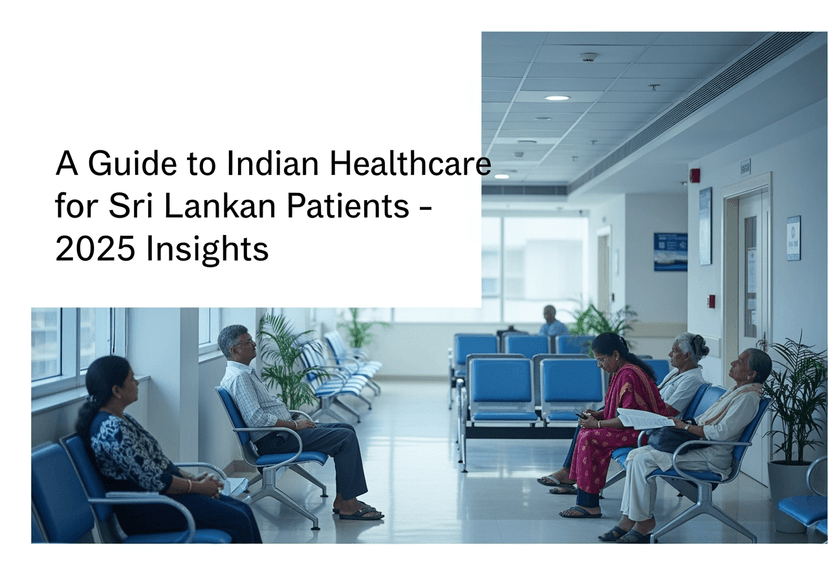
A Guide to Indian Healthcare for Sri Lankan Patients – 2025 Insights
Explore a guide to indian healthcare for sri lankan patients
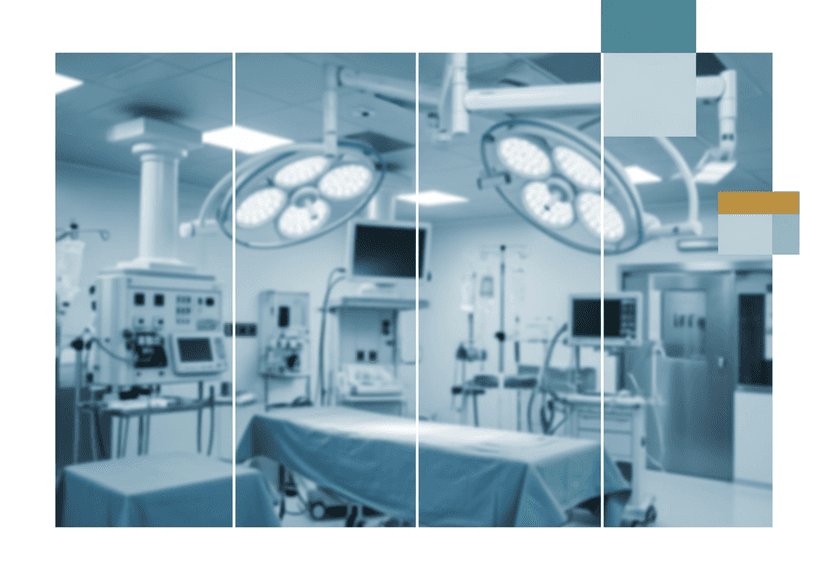
Heart Bypass Surgery in India: What International Patients Should Know – 2025 Insights
Explore heart bypass surgery in india: what international patients should
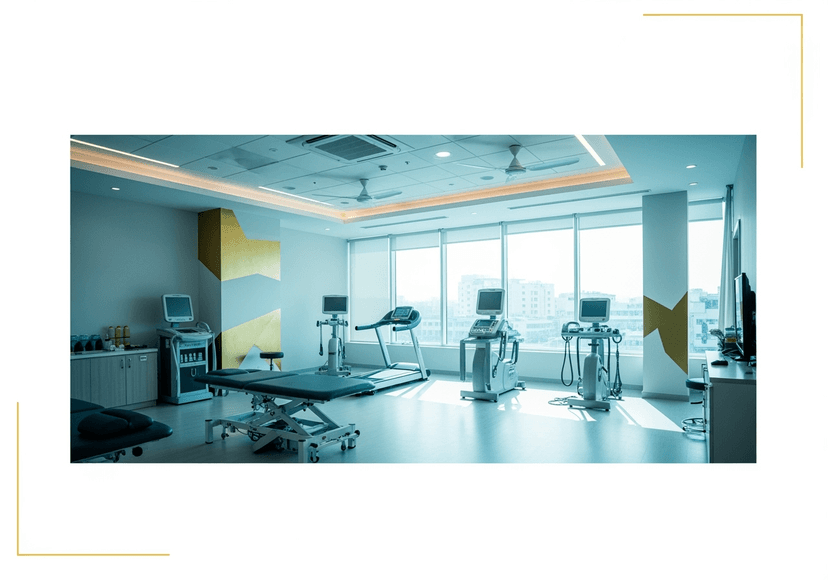
Best Physiotherapy Centers in India for Medical Tourists – 2025 Insights
Explore best physiotherapy centers in india for medical tourists –
